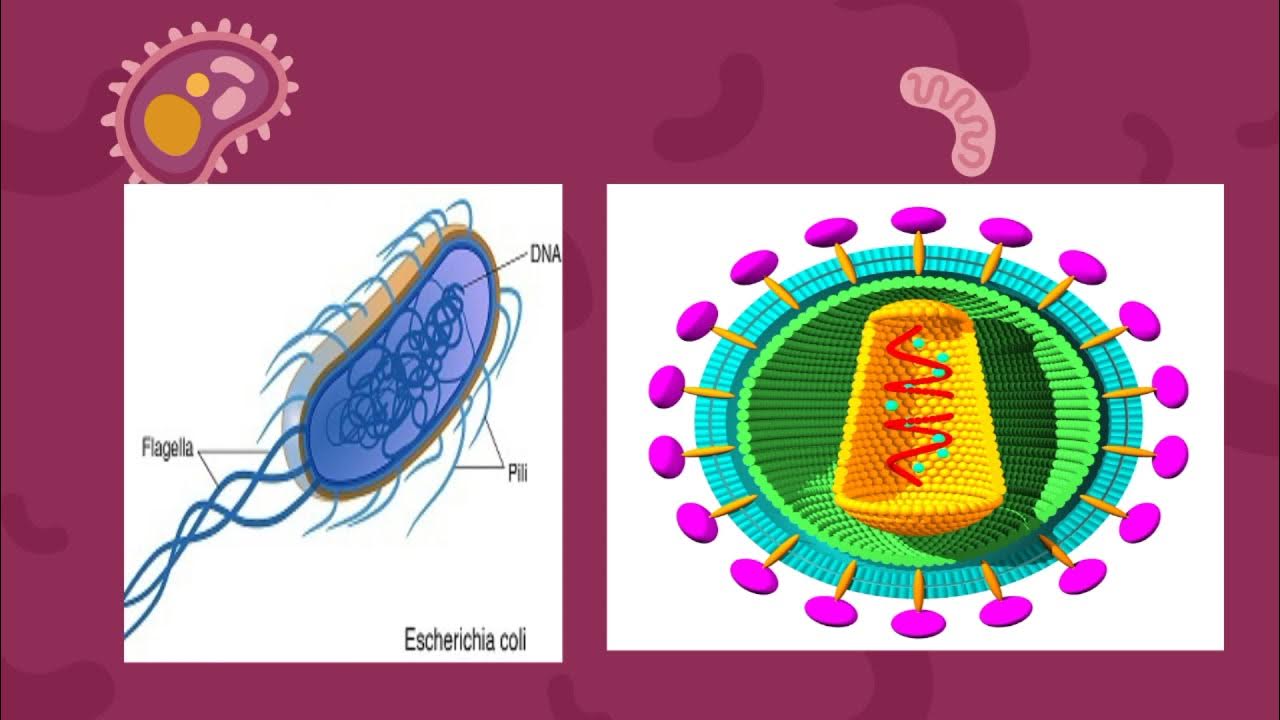Primary mitochondrial myopathy - causes, symptoms, diagnosis, treatment, pathology
Summary
TLDRPrimary mitochondrial myopathy is a rare genetic disorder caused by mutations in mitochondrial or nuclear DNA, leading to impaired ATP production in muscle cells. This results in symptoms like muscle weakness, fatigue, and exercise intolerance, with progressive external ophthalmoplegia being common. Diagnosis involves muscle biopsy, biochemical, and genetic testing. Though incurable, management includes supportive care, exercise, and mitochondrial cocktail supplements to enhance mitochondrial function.
Takeaways
- 🧬 Primary mitochondrial myopathy is a rare genetic disorder linked to mutations in either mitochondrial or nuclear DNA.
- 🏋️♂️ Muscle cells, especially skeletal muscles, are affected, leading to impaired energy production due to the inability to generate ATP.
- 🔋 Mitochondria are the energy-producing factories of a cell, utilizing the electron transport chain and ATP synthase to create ATP.
- 🌐 Electron transport chain dysfunction due to mutations results in a decreased ability to produce ATP, affecting muscle function.
- 🧬 Nuclear DNA mutations are often inherited in an autosomal dominant or recessive manner, while mitochondrial DNA follows maternal inheritance.
- 🚫 Mitochondrial DNA single deletion, a common cause, is sporadic and non-heritable.
- 🏥 Symptoms include muscle weakness, fatigue, pain, cramping, and in severe cases, paralysis and respiratory failure.
- 👁️ Progressive external ophthalmoplegia is a common symptom, affecting eye movements and causing double vision and drooping eyelids.
- 🩺 Diagnosis involves physical and neurological exams, muscle biopsy showing ragged-red fibers, and biochemical and genetic testing.
- 🛡️ There is no cure, but treatment focuses on symptom management, regular exercise, and mitochondrial cocktail supplements to improve mitochondrial function.
Q & A
What is primary mitochondrial myopathy?
-Primary mitochondrial myopathy is a rare genetic disorder characterized by mutated mitochondria in muscle cells, particularly skeletal muscle cells, which are unable to generate adenosine triphosphate (ATP), leading to muscle weakness and fatigue.
Why are mitochondria important for muscle cells?
-Mitochondria are crucial for muscle cells as they are the main energy-producing factories of a cell, generating ATP through the electron transport chain and the enzyme ATP synthase.
How does the electron transport chain contribute to ATP production?
-The electron transport chain, composed of protein and lipid complexes called electron carriers, passes electrons along the inner mitochondrial membrane, creating a proton gradient that drives ATP synthase to convert ADP into ATP.
What types of mutations can cause primary mitochondrial myopathy?
-Primary mitochondrial myopathy can be caused by mutations in either mitochondrial DNA or nuclear DNA, leading to abnormal production of mitochondrial proteins and impairing the function of the electron transport chain.
How is primary mitochondrial myopathy inherited?
-Mutations in nuclear DNA can be inherited in an autosomal dominant or autosomal recessive fashion, while mutations in mitochondrial DNA follow maternal inheritance, as only the mother's mitochondria are passed to offspring.
What is the mitochondrial DNA single deletion and how does it relate to primary mitochondrial myopathy?
-The mitochondrial DNA single deletion is a common cause of primary mitochondrial myopathy that is always sporadic and cannot be transmitted to offspring, as it typically occurs in post-zygotic cells and not in the germline.
What are the common symptoms of primary mitochondrial myopathy?
-Common symptoms include muscle weakness, fatigue, muscle pain, cramping, stiffness, or paralysis, exercise intolerance, and progressive external ophthalmoplegia with restricted eye movements, double vision, and drooping eyelids.
How does muscle involvement affect daily activities in primary mitochondrial myopathy?
-Involvement of facial muscles can cause slurred speech and swallowing difficulty, chest wall muscle involvement can lead to respiratory failure, and involvement of muscles in the hands and legs can affect walking, eating, and writing.
What diagnostic methods are used to confirm primary mitochondrial myopathy?
-Diagnosis involves a physical and neurological examination, a muscle biopsy showing ragged-red fibers, biochemical tests for blood lactate levels and ratios, and genetic testing for mutations in mitochondrial or nuclear DNA.
What treatment options are available for primary mitochondrial myopathy?
-While there is no cure, treatment options include symptomatic management, regular exercise to improve muscle function, and the use of mitochondrial cocktail supplements containing vitamins, creatine, antioxidants, and coenzyme Q10 to improve mitochondrial activity.
Why are mitochondrial cocktails used in the treatment of primary mitochondrial myopathy?
-Mitochondrial cocktails are used to provide nutrients and cofactors that support mitochondrial function, potentially improving ATP production and alleviating symptoms in individuals with primary mitochondrial myopathy.
Outlines

Этот раздел доступен только подписчикам платных тарифов. Пожалуйста, перейдите на платный тариф для доступа.
Перейти на платный тарифMindmap

Этот раздел доступен только подписчикам платных тарифов. Пожалуйста, перейдите на платный тариф для доступа.
Перейти на платный тарифKeywords

Этот раздел доступен только подписчикам платных тарифов. Пожалуйста, перейдите на платный тариф для доступа.
Перейти на платный тарифHighlights

Этот раздел доступен только подписчикам платных тарифов. Пожалуйста, перейдите на платный тариф для доступа.
Перейти на платный тарифTranscripts

Этот раздел доступен только подписчикам платных тарифов. Пожалуйста, перейдите на платный тариф для доступа.
Перейти на платный тарифПосмотреть больше похожих видео

What are mitochondria?

CAPÍTULO 2 Robbins: Mecanismos de lesión celular (Estrés oxidativo, daño de membrana, 🧬 y proteínas)

Inside ALS: The neurons behind the disease

Mitochondria (Structure and Functions of Mitochondria) Detailed Series

Carcinogenesis: The transformation of normal cells to cancer cells

Mikrobiologi | Genetika Mikroorganisme
5.0 / 5 (0 votes)
